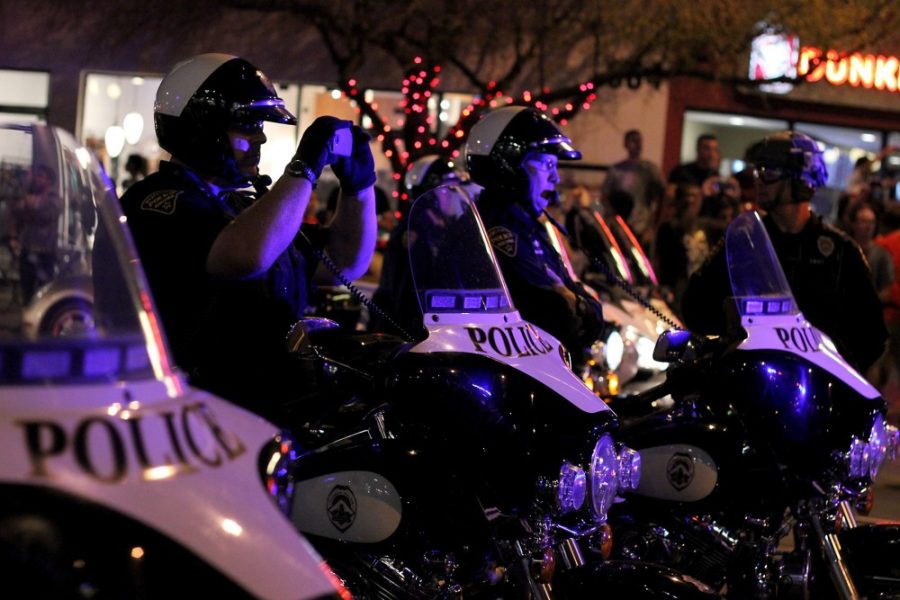An inquiry into the actions of Tucson Police Department officers in a conflict between police and a crowd of civilians on March 29 following the UA’s loss in the NCAA Elite Eight men’s basketball game was released on June 30. The inquiry found police action justified.
A report produced by the TPD Board of Inquiry using video footage from body-worn cameras on police officers, a walk-through and third-party video footage concluded that the majority of actions taken by TPD officers on the scene were appropriate.
“[TPD officers displayed] a great deal of self restraint…in their dealings with a hostile and antagonizing crowd,” the report said.
The board also found that actions from an individual officer, Sgt. Joel Mann, whose videotaped actions went viral in the days following the incident, were inappropriate.
Mann was filmed pushing a woman over a bench without apparent provocation on the night of March 29. An Office of Internal Affairs investigation of Mann found his use of force on three individuals in two separate incidents in the evening to be inappropriate.
The board’s findings were given to Mann’s chain of command for further action. The Arizona Department of Public Safety’s Criminal Investigations Division, Special Investigations Unit are conducting a criminal review of both incidents involving Mann. Additionally, the Federal Bureau of Investigation is investigating Mann for any violations of civil rights.
The OIA also conducted an investigation regarding a complaint against an unnamed officer by a civilian injured by less-lethal chemical munitions. Through the use of footage captured by body-worn cameras on TPD officers, OIA found that the complainant was aggressive and inciting the crowd to riot, and found that the use of force by the officer was within guidelines.
Roberto Villaseñor, TPD chief of police, said in a written statement that the media excessively covered isolated events of police violence, such as the video of Mann, and that overall there were minimal injuries, including no police injuries, for such a volatile situation.
The report describes the events of the conflict, which began after the conclusion of the Elite Eight game. It stated that police were attempting to stop crowds from forming on University Boulevard, but when the basketball game ended, thousands of people entered the street, causing a public safety concern.
“During [attempts to disperse the crowd] the crowd grew, and began to confront officers and display rowdy behavior,” the report said.
Acts of aggression continued to escalate from the crowd. Beer bottles, fire crackers and smoke bombs were thrown. After numerous attempts to disperse the crowd failed police made the decision to deploy less-lethal chemical munitions.
The report states that this decision was made based on many factors, such as acts of violence against police, obstruction of the road and sidewalk, increasing aggression from the crowd and the apparent intoxication of individuals inciting the crowd.
The police on the scene deployed approximately 200 pepperball rounds and nine aerosol vapor canisters containing pepper spray as well as other less-lethal chemical munitions. The OIA received two citizen complaints the night of the incident and one the following day.
Social media, such as Twitter and Facebook, aided in police investigation after the conflict, but drew people to the area the night of the incident despite police instructions to stay away, the report said.
The cost of police action on the night of the Elite Eight game $95,821.51, as well as the cost of overtime pay in the weeks leading up to and including the night of the incident.
The board made suggestions to TPD for the future. Suggestions included partnerships with the Arizona Department of Liquor Licenses and Control, Tucson Code Enforcement officers and the Tucson Fire Department in order to enforce crowd occupancy requirements during large events. Additionally, the board encouraged increased police training and staffing as well as planning with the UA during future Sweet 16 and Elite Eight tournaments.









